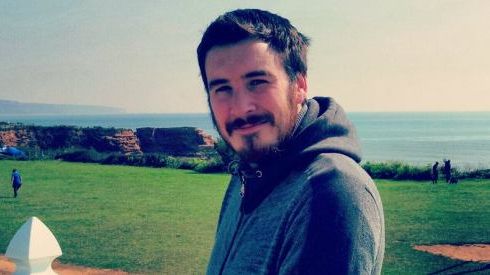
Blog post -
Making the Olympics social
Finn Concannon, Lead Social Media Producer at London 2012, looks back on the games and how the social team came together.
The Olympics and Paralympics are a bit of a blur now. With hindsight I can understand why – we worked for years towards a deadline which the world was holding us to. In comparison, the Games themselves took place over a very short (and fairly manic) period of time. Time flew while I was having fun and suddenly it was September 2012 and my contract ended.
On the starting blocks
In early 2009 I arrived at London 2012 to lead on social media and assist the web team. The majority of my previous experience had been running social media for a tiny record label run by family and friends. The difference in scale quickly became clear as I met new colleagues and realised the calibre of the work they’d done in their careers up to that point.
Social media was in very different shape: Facebook was excited about its 200m+ active users (now 1 billion+). Twitter was celebrating 5m+ tweets a day (now 500m+). YouTube users were uploading 20+ hours of video per minute (now 60+). Facebook Timeline? Google Plus? Pinterest? Never heard of them.
I took over YouTube and Flickr channels which had seen a flurry of activity at the end of Beijing 2008 but had been fairly dormant since then. London’s Games were three years away and not at the forefront of everyone’s minds. We had one Twitter channel with 150 followers, branded as ‘London 2012’ but being used only to cover what members of our Community Relations team were up to at local-level.
By the end of the Paralympics we were running 48 Twitter channels tweeting to 1.9m+ followers. Our YouTube channel had clocked over 12.5m views, despite broadcast restrictions meaning we couldn’t host any footage of Olympic sport. Our 9 Facebook pages had been liked over 1.8m times and our Google Plus page was followed by 850k+ people in just a couple of months. Social media was deeply integrated into every page of London2012.com which saw 4.73 billion page views during the Olympics.
Intensive training and playing by the rules
It was an extremely steep (but brilliantly educational) learning-curve which took us from A to B. The Games were one of the most scrutinised projects ever undertaken in this country. That coincided with social media becoming increasingly mainstream. As a result, we needed to establish the same kind of governance required by any of London 2012’s other forms of public-facing communications.
This could have been prohibitively limiting to our ambitions. We had to create, conceive and document policies to please as large a percentage as possible of our stakeholders and audiences. Difficult, considering their respective priorities often clearly conflicted with one another.
MPs, commercial partners, the tax-paying public and a huge range of internal projects and brands (like the Olympic Torch Relay) - all these parties wanted a say in what we published at various points. The initial fear was that this was a case of ‘too many cooks’ and would have a detrimental impact on our ability to build audiences and generate positive feedback.
I’ve learned from peers during and after the Games that our situation was very common to large organisations. Relative to our limited resources for the majority of the build-up (still only two entirely social media-dedicated staff members in 2012 up to Games-time) demand for social media activity and functionality was very high.
Team spirit and fine-tuning performance
What that demand became was a catalyst for us to organise ourselves. There’s nothing like a huge number of people asking you ‘why can’t you post this today?’ to get you to learn quickly how to legitimately explain why not, or why you can and will. We built relationships of trust with different departments within the organisation on this basis. As a result, we were able to consult and guide on the use of all social media activity and functionality, however simple or complex.
Internal communications and justifications were very time-consuming. But, because of the processes I’ve described, they remained manageable. All this was dealt with alongside generating and curating compelling and timely content, as well as day to day community management. That, combined with the collaborative spirit and support shown by junior and senior colleagues, meant that by the end of the Games we were proud of what we’d done. There was very little which we created which wasn’t justified by the engagement it generated.
The finishing straight
As the Games drew closer, we were able to more frequently bring social media activity to the front and centre of our ‘landmark’ moments (e.g. ticket launches, volunteer recruitment, 1 year to go, 100 days to go etc.). We made significant contributions to some of our main aims as a Communications team, driving traffic and recruitment for various campaigns. We created and maintained advocacy for the Games as a whole. We built large audiences who were ready and waiting to hear from us when we had key information to share with as many people as possible.
This meant that by Games-time we were ready and it was a treat. The audiences on our main channels swelled to millions as the Games began and continued to expand rapidly as the sport went on. The Games themselves ran so smoothly that we were privileged to be able to spend shift after shift focussing primarily on generating and sharing the buzz people around the world were feeling as their athletes did them proud.
Finn Concannon (@Finndc) was Lead Social Media Producer at London 2012 and now works as Social and Digital Media Consultant
